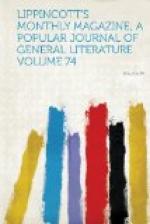No other gem has been counterfeited with such perfection as the emerald; and in fact it is utterly impossible to distinguish the artificial from the real gems by the aid of the eye alone: even the little flaws which lull the suspicions of the inexperienced are easily produced by a dexterous blow from the mallet of the skilled artisan. Not only emeralds, but most of the gems and precious stones, are now imitated with such consummate skill as to deceive the eye, and none but experts are aware of the extent to which these fictitious gems are worn in fashionable society, for oftentimes the wearers themselves imagine that they possess the real stones. There is not one in a hundred jewelers who is acquainted with the physical properties of the gems, and very few can distinguish the diamond from the white zircon or the white topaz, the emerald from the tourmaline of similar hue, the sapphire from iolite, or the topaz from the Bohemian yellow quartz. Jewelers are governed generally by sight, which they believe to be infallible, whilst hardness and specific gravity are the only sure tests.
Artificial gems rivaling in beauty of color the most brilliant and delicately tinted of the productions of Nature are now made at Paris and in other European cities. The establishments at Septmoncel in the Jura alone employ a thousand persons, and fabulous quantities of the glittering pastes are made there and sent to all parts of the world.
A fine specimen of prase when cut affords a fair imitation of the emerald. The green fluor-spar which Hauey called “emeraude de Carthagene” may also be substituted, but the application of the file detects the trick with ease. Some of the green tourmalines approach the emeralds in hue very closely, and by artificial light it is impossible to distinguish them from each other. Fragments of quartz may be stained by being steeped in green-colored tinctures. The Greeks stained quartz so like the real gem that Pliny exclaimed against the fraud while declining to tell how it was done. The Ancona rubies at the present day are made by plunging quartz into a hot tincture of cochineal, which penetrates the minute fissures of the rock.
But notwithstanding the high art reached by modern glass-makers, they are yet far behind the ancients in imitating the emerald in point of hardness and lustre. Many emerald pastes of Roman times still extant are with difficulty distinguished from the real gem, so much harder and lustrous are they than modern glass. The ancient Phoenician remains found in the island of Sardinia by Cavalier Cara in 1856 show fine color in their enamels and glass-works. The green pigment brought home from the ruins of Thebes by Mr. Wilkinson was shown by Dr. Ure to consist of blue glass in powder, with yellow ochre and colorless glass. From Greek inscriptions dating from the period of the Peloponnesian war we learn that there were signets of colored glass among the gems in the treasury of the Parthenon.




